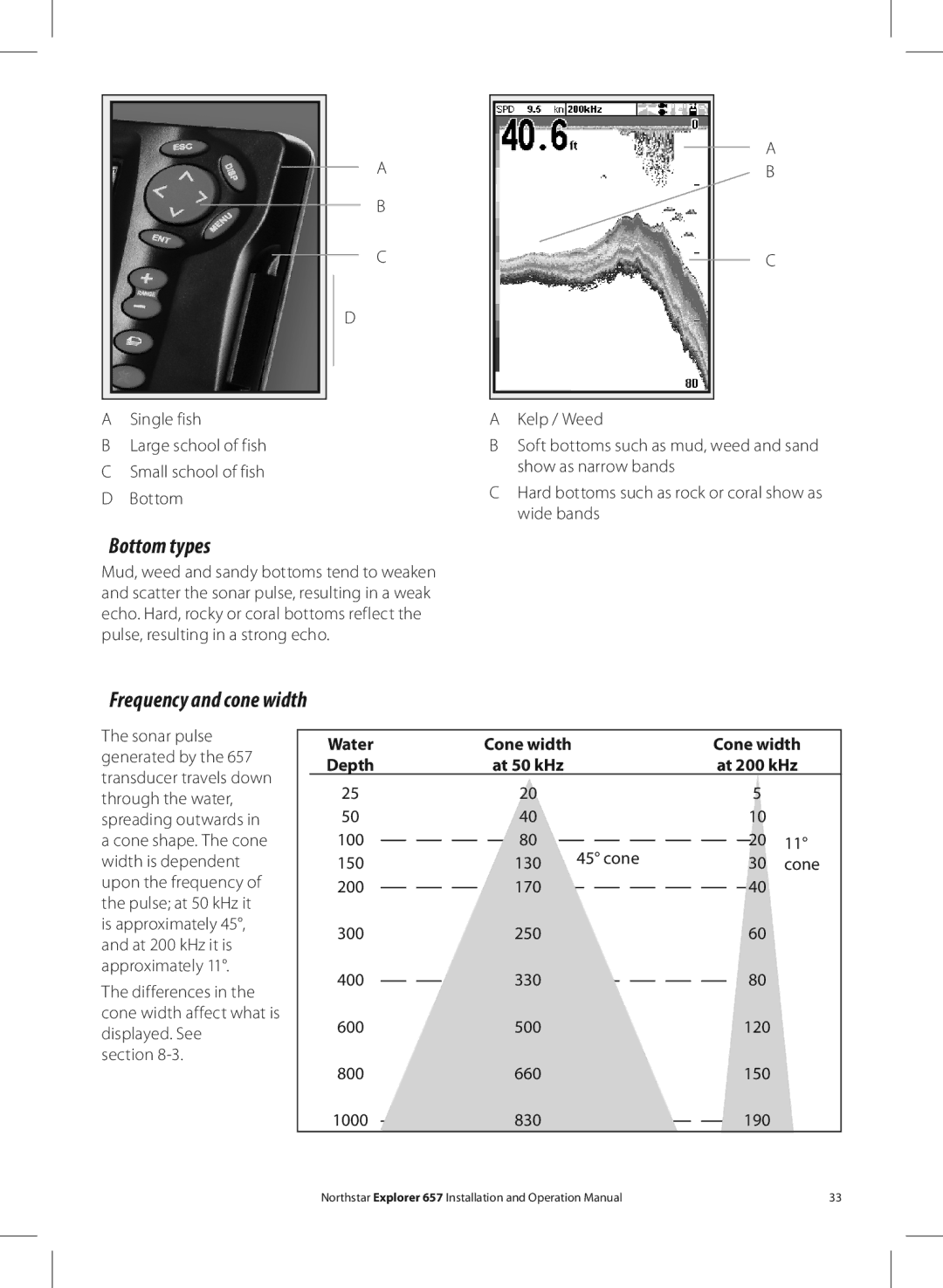
A
B
C
D
ASingle fish
BLarge school of fish C Small school of fish D Bottom
A
B
C
AKelp / Weed
BSoft bottoms such as mud, weed and sand show as narrow bands
CHard bottoms such as rock or coral show as wide bands
Bottom types
Mud, weed and sandy bottoms tend to weaken and scatter the sonar pulse, resulting in a weak echo. Hard, rocky or coral bottoms reflect the pulse, resulting in a strong echo.
Frequency and cone width
The sonar pulse generated by the 657 transducer travels down through the water, spreading outwards in a cone shape. The cone width is dependent upon the frequency of the pulse; at 50 kHz it is approximately 45°, and at 200 kHz it is approximately 11°.
The differences in the cone width affect what is displayed. See
section
Water | Cone width |
| Cone width | ||
Depth | at 50 kHz |
| at 200 kHz | ||
25 | 20 |
| 5 |
| |
50 | 40 |
| 10 |
| |
100 | 80 | 45° cone | 20 | 11° | |
150 | 130 | 30 | cone | ||
| |||||
200 | 170 |
| 40 |
| |
300 | 250 |
| 60 |
| |
400 | 330 |
| 80 |
| |
600 | 500 |
| 120 |
| |
800 | 660 |
| 150 |
| |
1000 | 830 |
| 190 |
| |
Northstar Explorer 657 Installation and Operation Manual | 33 |
